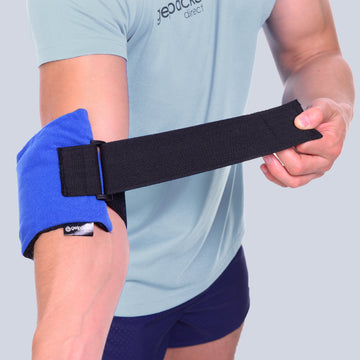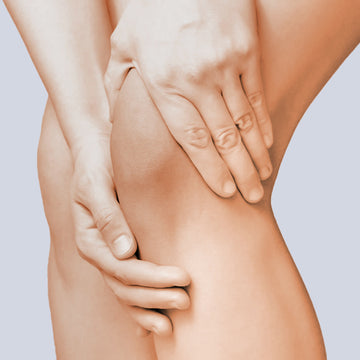Should I use Ice or Heat for Muscle Pain?
If you're dealing with muscle pain, you may be wondering whether you should use ice or heat to find relief. Both methods can be effective for managing muscle pain, but it's important to understand when to use each one. We’ll explore the benefits of ice and heat for muscle pain and provide guidance on when to use each method for the best results.
Using ice or heat for an injury or condition can help to shorten recovery time and alleviate chronic aches, pains, and stiffness. It's important to note that ice and heat should not be used simultaneously, and it's often best to consult with a healthcare professional for guidance on which treatment is most appropriate for your specific situation.
When should I use Ice for Muscle Pain Relief?
- Ice is a great option for managing muscle pain that is acute, or recent in nature (normally in the first 24-72 hours). It’s particularly effective at reducing inflammation and swelling, which are common after a muscle injury. To use ice for muscle pain relief, wrap it in a towel or use reusable ice packs for injuries and apply it to the affected area for 20 -30 minutes at a time, several times a day.
- In addition to reducing inflammation and swelling, ice can also numb the affected area and provide pain relief. If you're experiencing muscle pain after a workout or injury, it's a good idea to apply ice as soon as possible to help reduce the risk of further damage and speed up the healing process.
- However, there are exceptions to these general guidelines, and some injuries may respond better to a combination of both ice and heat therapy (Contrast Therapy). A recent study found that both ice and heat therapy effectively reduced damaged muscle tissue after strength training, but cold therapy was more effective for treating pain immediately after a workout and up to 72 hours later.
When should I use Heat for my Sore Muscles?
- Heat can be effective for managing muscle pain that is chronic or has been present for an extended period of time. Heat can help relax tight and sore muscles, and increase blood flow to the affected area, which can speed up the healing process. To use heat for muscle pain relief, you can apply a warm towel or heat pack to the affected area for 20 -30 minutes at a time. Heat can help to loosen tight muscles and increase flexibility, making it easier to move and stretch the muscle. It's best to use heat after the initial 72 hours following an injury.
- While heat can be helpful for managing chronic muscle pain, it's important to be cautious when using it. Heat can increase inflammation, so it's not recommended for acute injuries. Additionally, it's important to be careful not to burn yourself when using heat for muscle pain relief.
- It's important to consider the specific injury or condition being treated and whether ice or heat may be inappropriate. For example, using heat on a new injury may increase blood flow and the risk of swelling, and using ice for lower back pain related to muscle stiffness may only exacerbate the stiffness. Both ice and heat play important roles in the recovery process, but it's important to follow guidelines and consider the specific situation.
In summary, ice is best for acute muscle pain, while heat is best for chronic muscle pain. Whether you're using ice or heat, it's always a good idea to consult with a medical professional if you're unsure which method is right for you. And if you're looking for a convenient way to apply heat or ice to your injuries, consider using our reusable gel pack wraps which provide hot, cold and compression.













